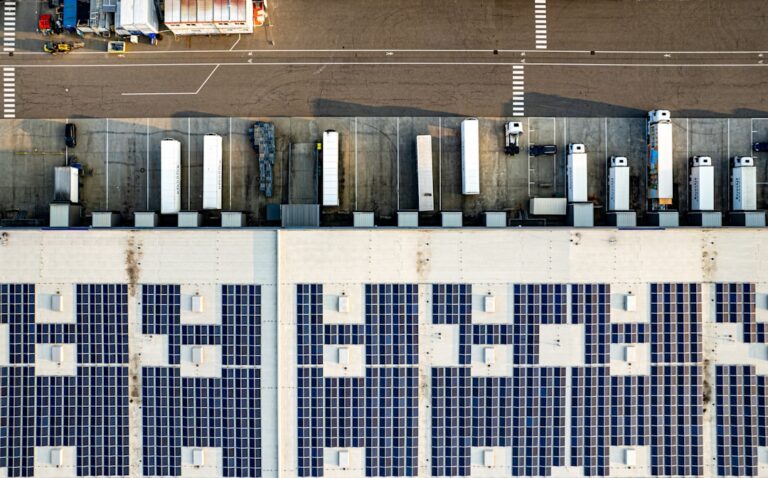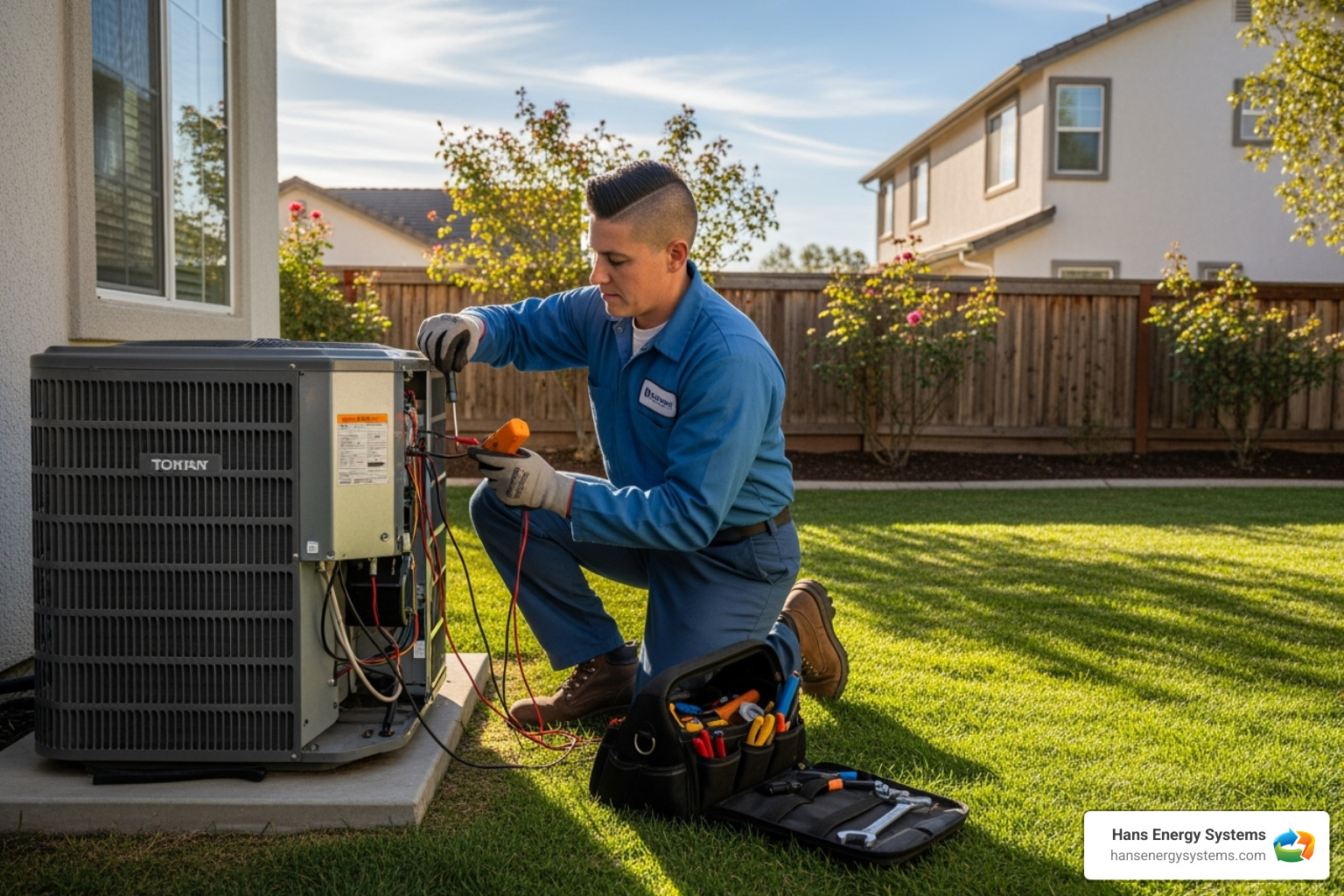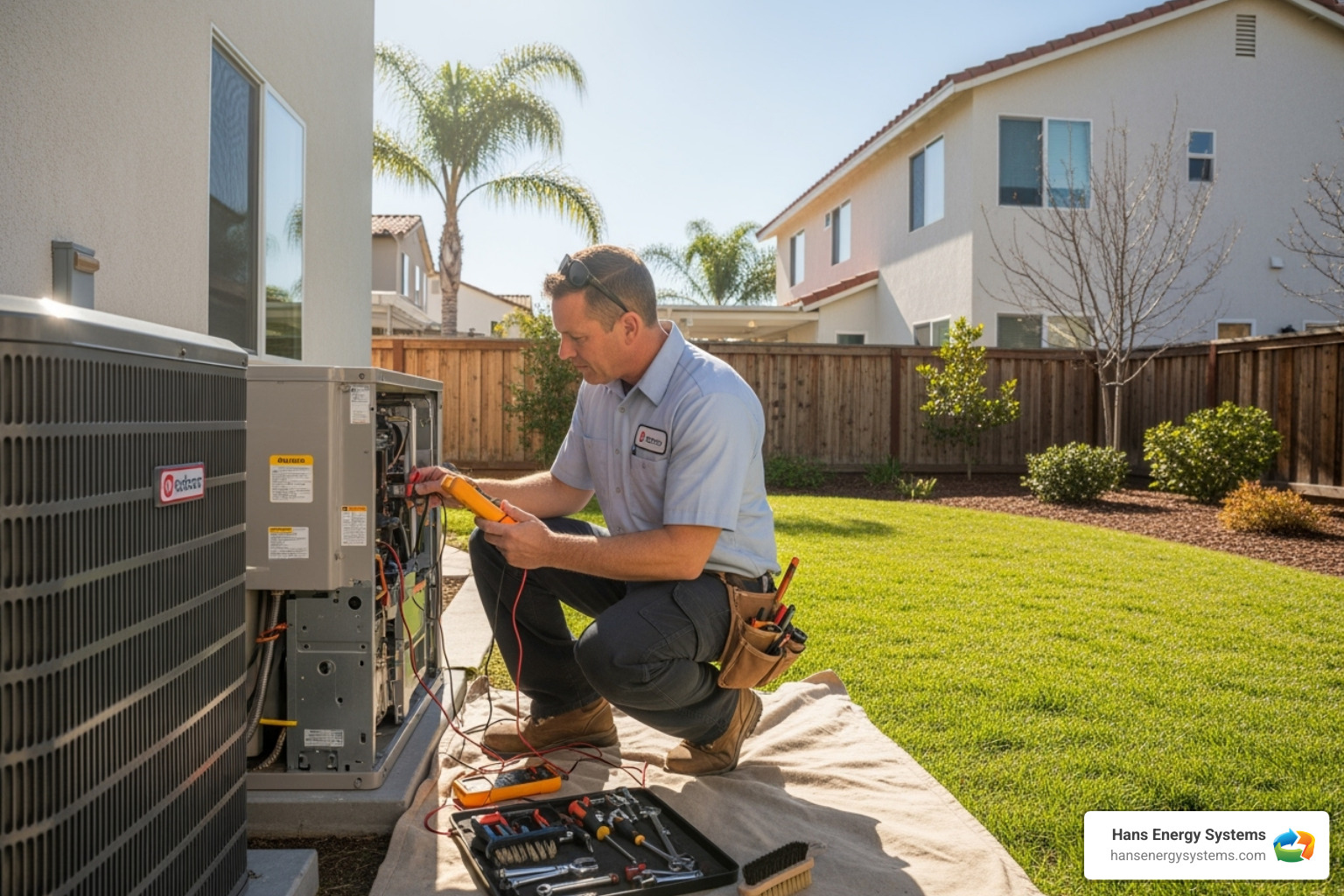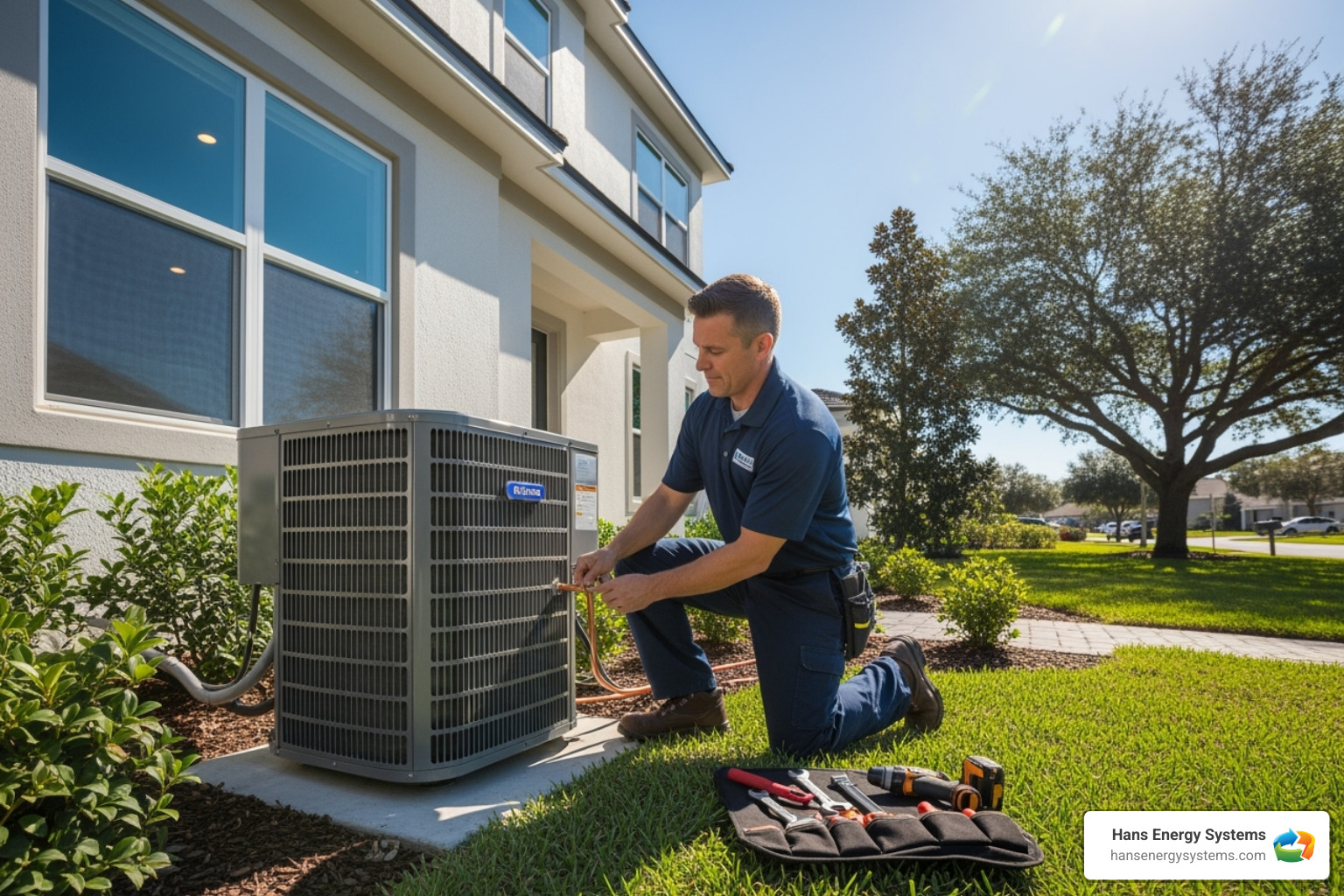Why Commercial Solar Energy is Changing Business Operations
Commercial solar energy systems are large-scale solar installations designed for businesses, ranging from small office buildings to massive industrial facilities. These systems can generate anywhere from 50 kilowatts to several megawatts of clean electricity.
Key benefits of commercial solar energy:
- Cost savings: Reduce electricity bills by up to 80%
- Strong ROI: Average payback period of 2.5-5 years with returns up to 25%
- Tax incentives: Federal Investment Tax Credit covers 30% of installation costs
- Brand improvement: Attract eco-conscious customers and employees
- Energy independence: Hedge against rising utility rates
Commercial solar differs significantly from residential systems. While home solar typically generates around 10 kilowatts, commercial installations can produce hundreds or thousands of kilowatts. They use larger, more powerful panels and commercial-grade inverters designed for higher energy demands.
The commercial solar market is booming. Over 8,300 megawatts of commercial solar projects now operate across the United States – enough to power 1.6 million homes. This growth reflects a simple reality: solar has become a smart business decision.
As one industry expert notes, “The cost of solar energy for the first time in history is cheaper than traditional coal power and natural gas.” This shift makes commercial solar not just an environmental choice, but a financial imperative for forward-thinking businesses.

What is Commercial Solar and Why is it Gaining Momentum?
Think of commercial solar energy as the grown-up version of home solar. While your neighbor’s house might have a neat array of panels generating enough power for their family, commercial solar is designed to fuel entire businesses, schools, hospitals, and industrial facilities.
These systems are part of what we call C&I (Commercial and Industrial) solar, and they’re incredibly diverse. A small office building might need a 50-kilowatt system, while a large manufacturing plant could require several megawatts of power. That’s like comparing a bicycle to a freight train – both get you where you need to go, but one handles much heavier loads.
What makes commercial solar special is that it creates what experts call “distributed generation.” Instead of getting all your power from a distant utility plant, you’re generating clean electricity right where you need it. This reduces stress on the power grid and cuts down on energy lost during transmission.

The main difference from residential solar isn’t just size – it’s purpose and complexity. While a typical home system generates around 10 kilowatts, commercial installations can range from 50 kilowatts to multiple megawatts. They use heavier-duty equipment designed for constant, high-volume operation.
Interestingly, commercial electricity rates average about 11.9 cents per kilowatt-hour compared to 13.3 cents for residential customers. But here’s the thing: businesses use so much more electricity that even small savings per kilowatt-hour add up to substantial monthly reductions. You can explore more about business solar options through resources like Solar for Business – SCE.
The Growing Commercial Solar Market
The numbers tell an exciting story. Commercial solar energy has exploded in recent years, with over 8,300 megawatts of projects now operating across 38,000+ installations in 43 states. To put that in perspective, that’s enough clean energy to power approximately 1.6 million homes.
The growth has been remarkable. In 2019 alone, businesses installed 1,286 megawatts of solar capacity. Even more impressive? Two-thirds of all corporate solar capacity has been installed since 2015. This isn’t just a trend – it’s a fundamental shift in how smart businesses think about energy.
What’s driving this boom? Energy independence is a big factor. Business owners are tired of unpredictable utility bills and rising electricity rates. Solar offers a way to lock in lower energy costs for decades. Plus, there’s enormous untapped potential still waiting. Studies show that offices alone could support 54 gigawatts of solar, while warehouses could handle 34 gigawatts. That represents a massive opportunity for businesses ready to take control of their energy future.
Core Components of a C&I System
A commercial solar energy system is essentially a small power plant designed specifically for your business. Each component is engineered for durability and high performance over decades of operation.
High-efficiency solar panels form the foundation, converting sunlight into electricity. Commercial panels are typically larger and more robust than residential versions, built to handle the demands of business operations. Commercial-grade inverters then convert that electricity into the type your equipment can use, with advanced features like rapid shutdown for safety.
The racking and mounting systems are like the backbone of your installation. These aren’t just simple brackets – they’re engineered structures designed to secure hundreds or thousands of panels against wind, snow, and weather for 25+ years. Monitoring software ties it all together, giving you real-time data about your system’s performance and alerting you to any issues before they become problems.
At Hans Energy Systems, we handle every aspect of Solar Energy System Design and Engineering to ensure your system works seamlessly with your business operations. We believe in building systems that not only generate clean energy but also provide the reliability and performance your business depends on.
The Financial & Strategic Advantages of Going Solar
When we talk to business owners about commercial solar energy, the conversation quickly shifts from environmental benefits to hard numbers. That’s because solar isn’t just about doing good for the planet—it’s about doing well for your business. The financial returns are so compelling that many of our clients wish they’d made the switch years earlier.

The Financial Case for Commercial Solar Energy
Let’s start with the most immediate benefit: dramatically lower electricity bills. We’ve helped businesses slash their electricity costs by up to 80%, freeing up cash flow that can be reinvested into operations, equipment, or growth initiatives. Think about what your business could do with an extra 80% of your current electricity budget every month.
The numbers tell a powerful story. A typical 500-kW commercial solar energy system can save a business over $3 million over its 20-year lifespan. While the average commercial building spent about $7,800 on electricity in 2021, solar can cut this expense dramatically year after year.
Return on investment (ROI) is where solar really shines. We consistently see ROI rates of 25% or higher, with some larger commercial systems delivering returns of 40% or more. The payback period typically ranges from 2.5 to 4 years, meaning your system pays for itself relatively quickly and then provides decades of additional savings.
To make these investments accessible, businesses have several financing paths. You can purchase a system outright for maximum savings, lease equipment with little to no money down, or enter a power purchase agreement (PPA) where you simply buy the solar electricity at a reduced rate. Each option has its advantages, and we help you explore what works best for your situation. For more details on maximizing your solar investment, check out our guide on Solar Energy Revenue, Net Metering, and More.
Government Incentives and Tax Credits
The federal government makes going solar even more attractive through generous incentives. The Federal Investment Tax Credit (ITC) currently covers 30% of your total installation costs—that’s a substantial reduction in your upfront investment that comes right off your tax bill.
Beyond the ITC, businesses can take advantage of bonus depreciation through the Modified Accelerated Cost Recovery System (MACRS), allowing you to depreciate the full value of your solar system in the first year. This creates significant tax savings that further improve your return on investment.
Many states and local governments offer additional rebates and incentives. Property Assessed Clean Energy (PACE) programs provide another financing option, allowing businesses to pay for solar improvements through property tax assessments. You can learn more about these programs through the Property Assessed Clean Energy (PACE) programs resource.
Enhancing Your Brand and Environmental Impact
While the financial benefits are compelling, commercial solar energy also delivers powerful branding and marketing advantages. Today’s consumers increasingly choose businesses that demonstrate environmental responsibility. Solar panels on your roof send a clear message that your company cares about sustainability and the future.
This isn’t just feel-good marketing—it’s backed by real consumer behavior. Studies show that consumers are willing to pay more for products and services from environmentally responsible companies. Consumer demand for sustainability continues to grow, making your solar investment a competitive advantage.
Corporate Social Responsibility (CSR) has become crucial for attracting top talent and winning contracts with larger corporations. Many companies now require their vendors and partners to meet specific environmental standards. Solar helps you check those boxes while reducing your carbon footprint significantly.
The environmental impact is substantial. A typical commercial solar installation prevents thousands of tons of CO2 emissions over its lifetime—equivalent to planting hundreds of trees or taking dozens of cars off the road. These aren’t just numbers for your sustainability report; they represent real environmental benefits that resonate with customers, employees, and stakeholders who care about the future of our planet.





